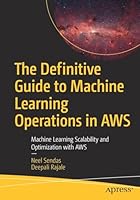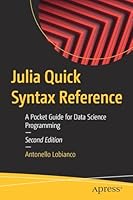
Applied Machine Learning Explainability Techniques: Make ML models explainable and trustworthy for practical applications using LIME, SHAP, and more
- Length: 306 pages
- Edition: 1
- Language: English
- Publisher: Packt Publishing
- Publication Date: 2022-07-29
- ISBN-10: 1803246154
- ISBN-13: 9781803246154
- Sales Rank: #3336678 (See Top 100 Books)
Leverage top XAI frameworks to explain your machine learning models with ease and discover best practices and guidelines to build scalable explainable ML systems
Key Features
- Explore various explainability methods for designing robust and scalable explainable ML systems
- Use XAI frameworks such as LIME and SHAP to make ML models explainable to solve practical problems
- Design user-centric explainable ML systems using guidelines provided for industrial applications
Book Description
Explainable AI (XAI) is an emerging field that brings artificial intelligence (AI) closer to non-technical end users. XAI makes machine learning (ML) models transparent and trustworthy along with promoting AI adoption for industrial and research use cases.
Applied Machine Learning Explainability Techniques comes with a unique blend of industrial and academic research perspectives to help you acquire practical XAI skills. You’ll begin by gaining a conceptual understanding of XAI and why it’s so important in AI. Next, you’ll get the practical experience needed to utilize XAI in AI/ML problem-solving processes using state-of-the-art methods and frameworks. Finally, you’ll get the essential guidelines needed to take your XAI journey to the next level and bridge the existing gaps between AI and end users.
By the end of this ML book, you’ll be equipped with best practices in the AI/ML life cycle and will be able to implement XAI methods and approaches using Python to solve industrial problems, successfully addressing key pain points encountered.
What you will learn
- Explore various explanation methods and their evaluation criteria
- Learn model explanation methods for structured and unstructured data
- Apply data-centric XAI for practical problem-solving
- Hands-on exposure to LIME, SHAP, TCAV, DALEX, ALIBI, DiCE, and others
- Discover industrial best practices for explainable ML systems
- Use user-centric XAI to bring AI closer to non-technical end users
- Address open challenges in XAI using the recommended guidelines
Who this book is for
This book is designed for scientists, researchers, engineers, architects, and managers who are actively engaged in the field of Machine Learning and related areas. In general, anyone who is interested in problem-solving using AI would be benefited from this book. The readers are recommended to have a foundational knowledge of Python, Machine Learning, Deep Learning, and Data Science. This book is ideal for readers who are working in the following roles:
- Data and AI Scientists
- AI/ML Engineers
- AI/ML Product Managers
- AI Product Owners
- AI/ML Researchers
- User experience and HCI Researchers







